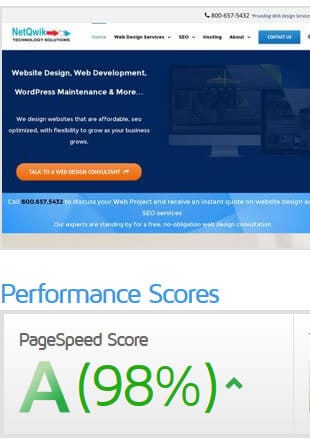SEO Strategies
The best SEO strategies evolve over time as search engine algorithms and user behaviors change. However, here are some fundamental SEO strategies that are generally effective:
- Keyword Research and Optimization: Conduct thorough keyword research to identify relevant keywords and phrases that your target audience is searching for. Optimize your website’s content, meta tags, headings, and URLs with targeted keywords to improve relevance and visibility in search results.
- High-Quality Content Creation: Create high-quality, relevant, and engaging content that provides value to your target audience. Focus on addressing user intent, solving problems, and answering questions within your niche or industry. Publish regularly and maintain a consistent content schedule to keep your audience engaged and attract organic traffic.
- On-Page Optimization: Optimize on-page elements such as meta tags, headings, alt tags, and internal linking to improve search engine visibility and user experience. Ensure that your website pages are structured and optimized according to SEO best practices.
- Technical SEO: Address technical aspects of SEO, such as site speed, mobile-friendliness, crawlability, and indexability, to improve website performance and search engine rankings. Optimize your website’s technical infrastructure, including server settings, site architecture, and URL structure, for better search engine visibility.
- Link Building: Build high-quality, relevant backlinks from authoritative and reputable websites to improve your website’s authority and trustworthiness in the eyes of search engines. Focus on acquiring natural backlinks through guest blogging, content partnerships, influencer outreach, and social media promotion.
- Mobile Optimization: Ensure that your website is optimized for mobile devices, as mobile-friendliness is a significant ranking factor for search engines. Use responsive design, optimize page load speed, and prioritize mobile user experience to enhance search engine visibility and user engagement.
- User Experience (UX) Optimization: Prioritize user experience factors such as page load speed, navigation, readability, and accessibility to improve engagement and retention. Create a positive user experience that encourages visitors to stay on your website, explore content, and take desired actions.
- Local SEO: Optimize your website for local search if you have a physical location or serve local customers. Create and optimize Google My Business listings, local citations, and location-based content to improve visibility in local search results and attract local customers.
- Monitoring and Analysis: Regularly monitor website performance, track key metrics, and analyze user behavior using web analytics tools such as Google Analytics and Google Search Console. Identify areas for improvement, track progress over time, and make data-driven decisions to optimize your SEO efforts effectively.
- Stay Updated: Stay updated with the latest algorithm updates, industry trends, and best practices in SEO. Continuously learn and adapt your strategies to keep pace with changes in search engine algorithms and user behavior.
By implementing these SEO strategies and staying committed to ongoing optimization and improvement, you can enhance your website’s search engine visibility, attract organic traffic, and achieve your business objectives over time.
Having your website appear on relevant search engine searches is vital to the success of your business. Although search engine optimization is not a rocket science, it is constant hard work. You have to continuously optimize your website.
Cutting Costs on Web Design
When considering a web design or a redesign, some small business may price shop for a website. It’s a good policy to price shop, however do not sacrifice quality in the process. You can’t build a great building on a weak foundation. You must have a solid foundation if you’re going to have a strong superstructure. Your website should be build with SEO in mind from the planning stage. Therefore it is very important to hire an experienced web designer who has expertise in search engine optimization.
Page Speed to Rank High
 Do you know that Page Speed counts with google rankings? Google announced a few years back they consider page speed as a ranking signal. In their blog they specify:
Do you know that Page Speed counts with google rankings? Google announced a few years back they consider page speed as a ranking signal. In their blog they specify:
Too many Plug-ins
Open source programs such as WordPress, Joomla, Drupal, Zen Cart, etc. have become very popular as web developers take advantage of their build in functionality. The functionality for open source programs can be further extended by using plug-ins. It is tempting use these plug-ins. However, the more plug-ins you add the worst your performance will be. Maintaining the website could also become a nightmare because as new versions of the software are launched, the plug-ins might become incompatible and create havoc with your website.
Optimizing Images
Images are often an overlooked where SEO is concerned. It is important to optimize your images. Try to keep the file size as small as possible. Having large file sizes for images will have impact on the performance of your website.
Keyword Stuffing
Search engine optimization (SEO) is constantly changing. You may have experienced the situation where your website was coming up on the top of the search results just a few years back but now the ranking has dropped. This is because Google has a long history of algorithm updates where they determine what search results should be displayed. These algorithms include Google Hummingbird, Mobile Friendly Update, Panda Update, Pigeon Update and so on.
When SEO was in its infancy, internet marketeers were stuffing their content with keywords. Search engines have become sophisticated. They consider this practice as spamming. Your keyword density should be between 3 to 5% . Instead of focusing on stuffing your website content with keywords, focus on developing high quality content around topics your target audience is interested in.
Easy Navigation
If users can easily navigate through your websites, so will the search engines. It is a good policy to have an html site map for the users. You should also create an XML site map to submit to the search engines.
Secure Encryption for Your Website
Google officially announced that HTTPS would become a ranking signal. Therefore website that use SSL may get a boost in Google rankings. If you do not already have an SSL consider getting one. You can ask your web designer to purchase it and apply it for you. An SSL certificate usually costs around $50.
How We Can Help
When using our web design company, you can expect to get a high-quality website that will effectively promote your Law Firm. Our goal is to increase the amount of targeted traffic that comes to your website.
Contact us today for more information on how we can help you grow your law firm with our website design services and search engine optimization techniques.
Call today at 800-657-5432
NetQwik is a web design and SEO company headquartered in Ashburn, Virginia. We are a one stop web solutions company and operate out of our offices in Ashburn, Fairfax, Richmond, Spotsylvania, Norfolk, Northern Virginia.
We have been rated as one of the best SEO agencies in Northern Virginia. Our services include web design, e-Commerce websites, local SEO, search engine optimization, social media marketing, content marketing, digital marketing, domain names and hosting, we provide it all.
If you are looking for a Northern Virginia SEO and web design company to launch your next project, give us call at 800-657-5432 or fill out our contact form for a free consultation.



